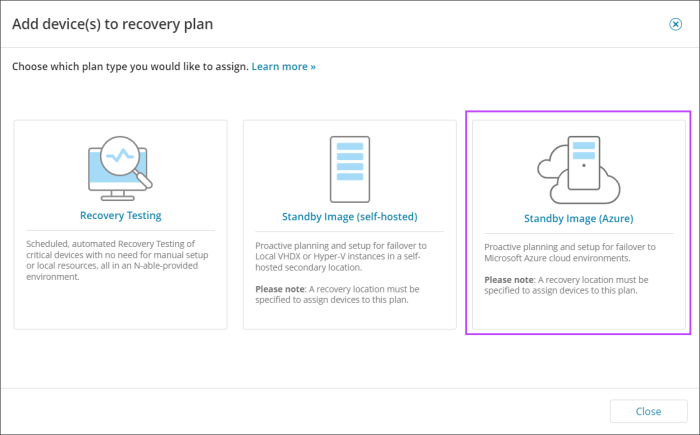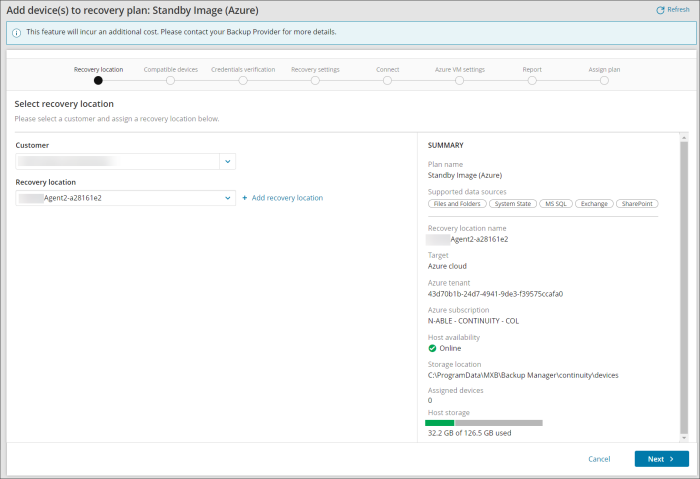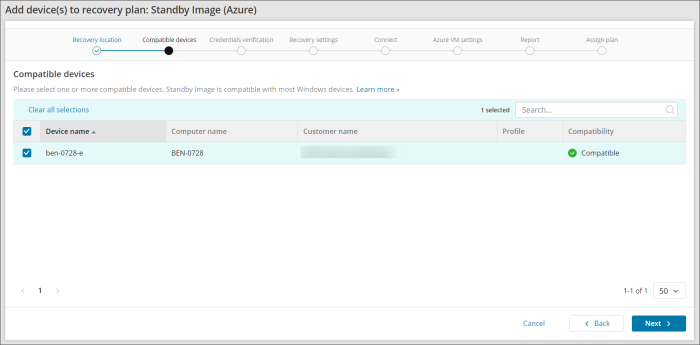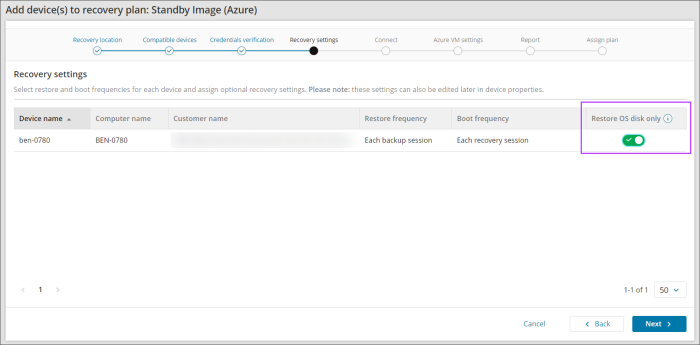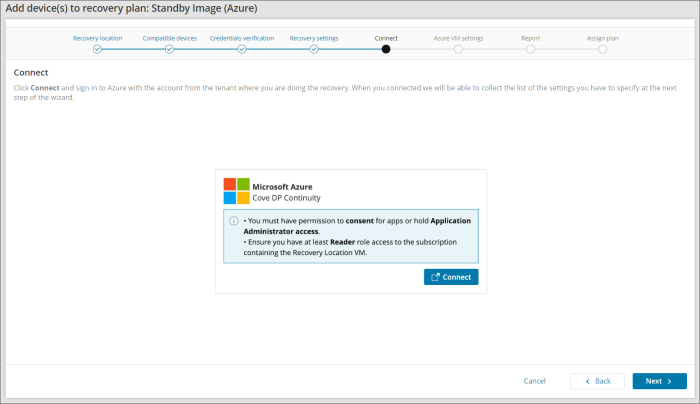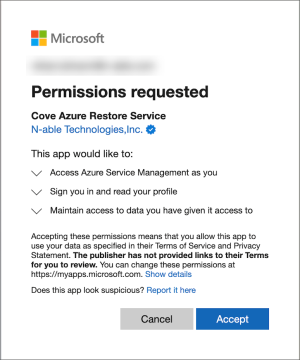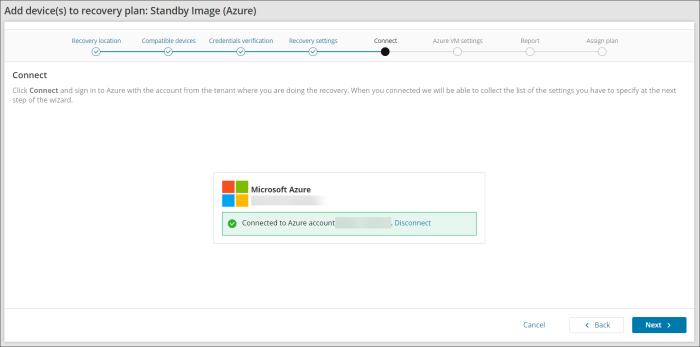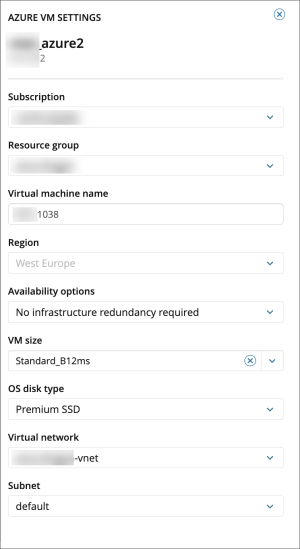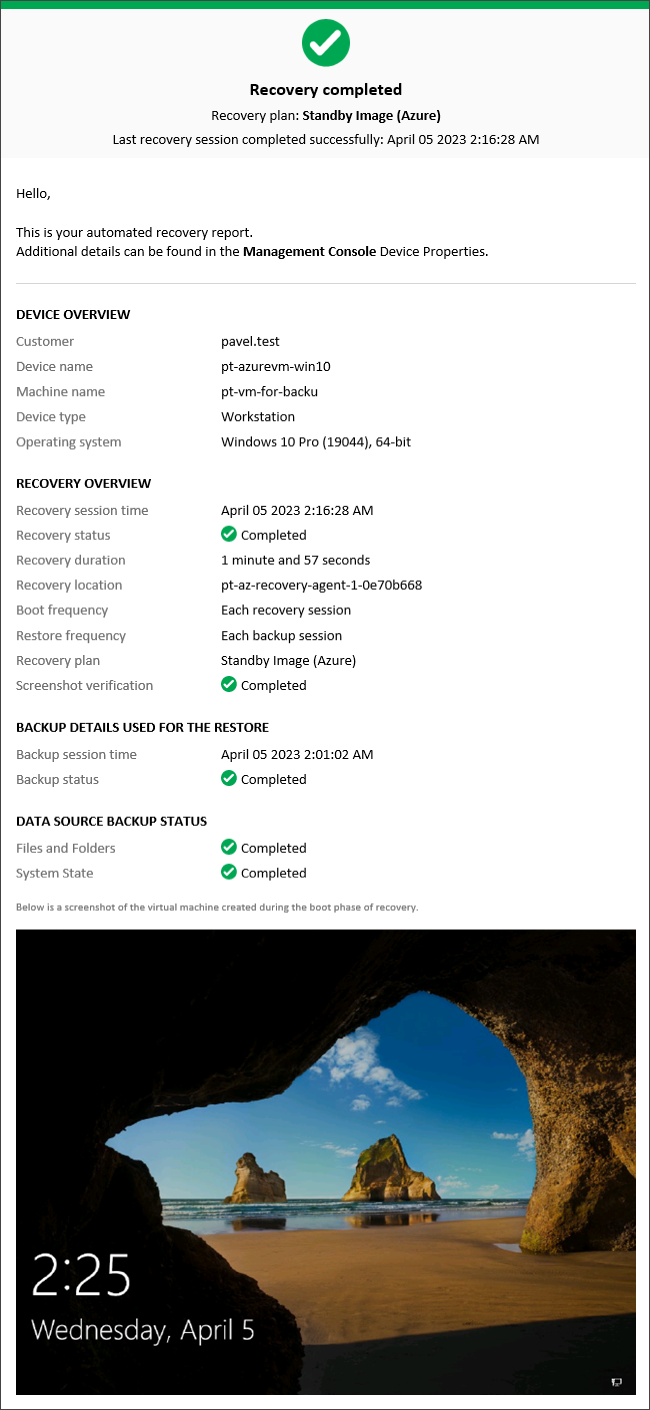Configure Standby Image to Azure
Devices cannot be added to a Standby Image plan if already assigned to a Recovery Testing plan.
From Main Dashboard
To enable Standby Image to Azure on a device from the Management Console's main Dashboard, this must be done from the Beta Dashboard only, follow the steps below:
- Log in to the Management Console under a SuperUser or Manager account
- Select the device(s) you wish to assign a plan to using the checkboxes to the left of the device name
- From the Beta Dashboard, click Add to recovery plan from the Toolbar
- Select Standby Image (Azure)
- Select the customer the device(s) you wish to apply the Standby Image plan belong to
- Choose the recovery location as was configured in Add Recovery Locations
If the selected customer does not have any locations, you must add one before continuing by selecting Add recovery location. See Add Recovery Locations for full details of adding a location.
If the Recovery Location does not have a drive letter, one must be provided before continuing
It is not possible to assign a location for which the Host availability is "Offline"
- Click Next
- Confirm the device selected from the Dashboard is compatible and click Next
- Enter the security code/encryption key or passphrase for the device(s). This can be either:
- Private encryption key - Created by yourself when installing Backup Manager on the device. If you have lost the encryption key/security code for the device, you will need to Convert devices to passphrase-based encryption
- Passphrase encryption - These are generated on demand for automatically installed devices. You can find information on this here
- Click Next to continue
- If you wish to skip all data drives, enable Restore OS disk only
Enabling Restore OS disk only will help to speed up restores as the only thing being restored is the Operating System
- Click Next
- Connect to Microsoft Azure by either:
- Allow permissions to the Azure user account to consent for apps access,
or;
- Once connected, click Next
- Click Azure VM settings towards the right-hand side of the screen to open the settings configuration window:
- Configure the Azure VM Settings:
- Subscription
This cannot be changed as the subscription is set in the Recovery Location configuration
- Resource Group
- Virtual Machine name
- Region
This cannot be changed as the subscription is set in the Recovery Location configuration
- Availability options
- VM size
- OS disk type
- Virtual Network
- Subnet
- Subscription
- Click Next to progress to the Report window to enter one or more email addresses to receive a report when recovery has completed (separate multiple email addresses using a comma or semi-colon)
If you do not want to add an email address to receive reports, click Skip this step
- Confirm assigning the plan to the device(s)
- Wait for the plan to be assigned until you see a confirmation banner on the page
- Click Finish
If you do not see the authentication page, make sure your browser is not blocking pop-up windows.
From Standby Image Overview
- Log in to the Management Console under a SuperUser or Manager account
- Navigate to Recovery Dashboard > Standby Image
- Click Add to Plan
- Select Standby Image (Azure)
- You will now be taken to the Add device to plan wizard. Follow the steps to enable the Standby Image to Azure Plan starting at step #5 by confirming the Customer selected is correct where you can now follow the above instructions to add the device to the plan
Recovery Report
Where the plan has report recipient email address(es) configured, once the test has completed those recipients will receive the report in their email in-box. Below is an example of a successful test email:


